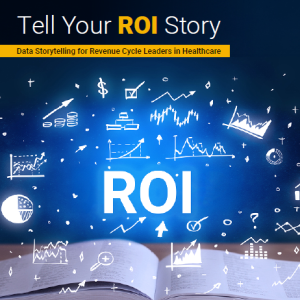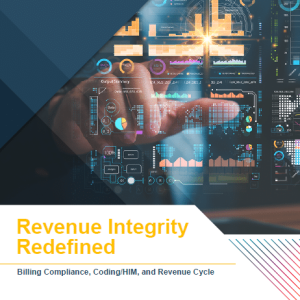Achieving revenue integrity requires a cross-functional approach leveraging data gathered by multiple departments to generate a comprehensive picture of a healthcare organization’s revenue cycle. However, the data needed to accomplish this is typically siloed in multiple departments, including coding and revenue cycle management (RCM). This puts the organization at risk by preventing a 360-degree vantage point. While each stakeholder sees what they need to see, aggregating all the information gives the organization a much stronger chance to have a healthier bottom line.
To accomplish this, an advanced audit platform is needed – a platform capable of pulling together all this data and putting it into a consumable format to help inform strategic decisions for the organization.
Data Utilization in Healthcare
From Coding to Compliance, different stakeholders glean different information from the same data:
- Revenue Cycle needs to know if bills are going out on time, to the right payer, and recognizing the maximum reimbursements.
- Billing Operations seeks to identify billing errors and ensure completeness of charge capture.
- Coding evaluates whether patient records are properly coded to the highest accuracy and specificity and properly applying any recent regulatory updates.
- Billing Compliance analyzes the data to ensure proper billing and coding rules are followed and whether documentation is accurate and appropriate.
- Clinicians need to determine if services are being properly documented.
- Technology (IT) needs to determine whether the correct billing edits are in the system and whether code scrubbers are accurately applying the right rules.
Clearly there is much to be gleaned from slicing and dicing data by individual department. However, its full power is realized when data can also be aggregated across the organizational continuum, and sophisticated analytics, dashboards, and viewpoints applied. This lets multiple departments work toward common goals of optimizing the revenue cycle and achieving revenue integrity.
The Power of Aggregation in Play
What is needed to drive organization-wide strategic decision-making is a technology platform capable of taking in the massive amounts of RCM data an organization generates daily, aggregating and analyzing it, and returning it to the various stakeholders in meaningful and actionable formats.
This was the case for a multispecialty group with 1,200 physicians and 250 midlevel providers based in the mid-Atlantic region of the U.S. The Compliance team wanted to leverage internal data to plan risk-based audits based on the potential risks unique to an academic group practice, such as new provider audits and under/over-coding. However, being limited to routine audits made it difficult to identify the trends necessary to effectively address these types of issues. They were also dependent upon IT to generate reports – which would need to be requested monthly or quarterly – without the benefit of real-time data.
They opted to deploy MDaudit, which combines fully integrated risk capabilities and supporting workflows on a single platform, providing end-to-end denials analytics technology designed to pre-emptively protect against revenue leakage by identifying and resolving systemic risks based on historical data and applied insights. This allows organizations to proactively address the issues that lead to costly inpatient and outpatient claim denials by creating a closed-loop feedback process between insights, action, and outcomes to manage high-impact denials and improve overall revenues.
Access to a comprehensive view of real-time information allowed the Compliance team to tap real-time claims data to identify and monitor trends and issues without relying on other departments for reports. One of the first success stories to emerge was the identification an outlier practice for rate of denials for Evaluation & Management (E&M) services. Drilling into the data, they determined what the claims had in common so they could add an edit into the billing system, leading to a real-time drop of more than 20% in the times modifier 25 was used on established patient visit coding. Ongoing monitoring ensures the percentages don’t creep back up and eliminates the need to conduct additional audits of dozens of similar cases.
Another MDaudit Enterpriser user, a regional, integrated healthcare provider/payer system with 230 locations, including six acute care hospitals and 22 urgent care facilities, deployed MDaudit as part of its transformational excellence initiative which encompassed operational improvements – including a move toward risk-based auditing for enhanced revenue integrity. The platform had an immediate and significant financial impact resulting from additional revenue and high-risk-initiated audits, including identifying approximately $148,000 in charges that had been billed incorrectly and $4.5 million in at-risk revenues for COVID-19-related services. The Coding Compliance team was also able to identify $18.5 million in cash acceleration opportunities, such as fewer days in A/R and ensuring use of the highest appropriate level for coding.
Technology in Action
The most impactful platform will deliver workflow automation, risk monitoring, and built-in analytics and benchmarking capabilities. It will be powered by augmented intelligence and expertise in providing proven revenue cycle management services and solutions to the nation’s leading healthcare provider organizations. This, in turn, drives improved outcomes through actionable analytics and empowers healthcare organizations to achieve unparalleled efficiency, reduce compliance risk, and retain more revenue.









